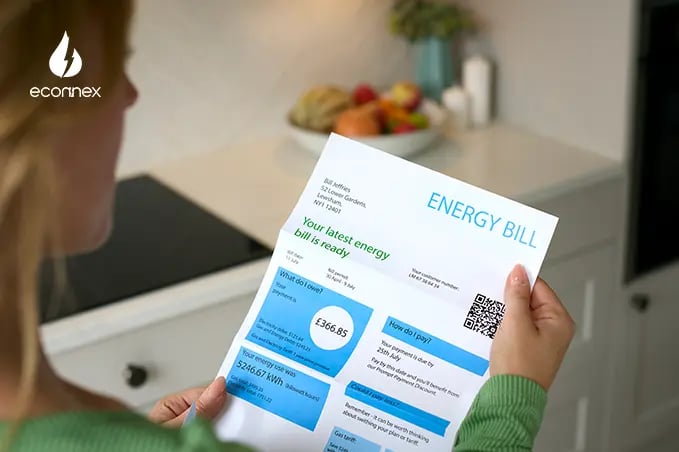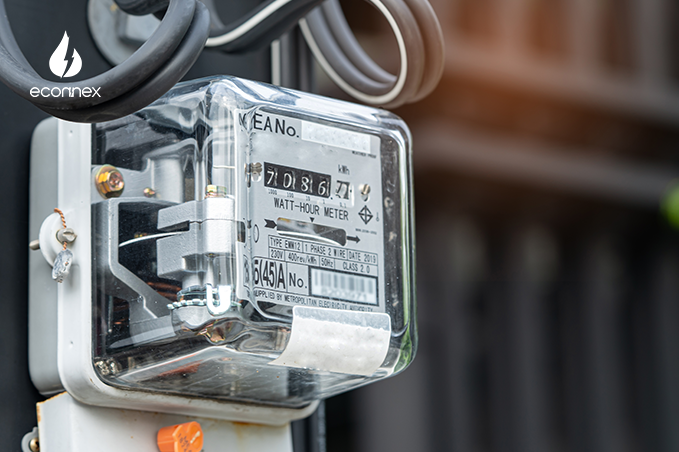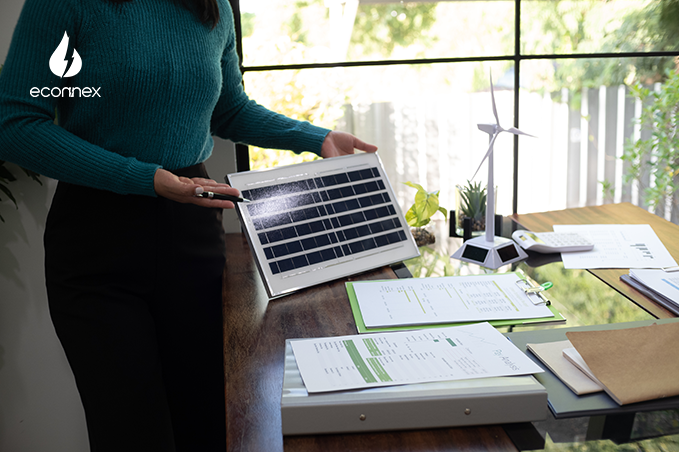Average Electricity Bills Explained | Discover how state variations affect your energy costs in Australia and find ways to potentially save with Econnex.

Published on 17/04/2024
By William Walton
Energy Comparison
Do you wonder how your energy bills compare to those of other Aussies across the nation? We were curious as well.
The average energy bill in Australia varies by state and is influenced by factors such as consumption habits, household size, and the type of energy used. These differences underscore the importance of comparing energy plans and providers to ensure you get the best deal available from the panel of retailers.
If you find that you are paying more than the averages provided, consider using services such as our intuitive Econnex Energy Comparison platform to find a potentially better deal.
Remember, averages are for reference purposes only, and retailer prices are subject to change at any time.
As we inspected the various pieces of research, our analysis reveals that the average quarterly electricity bill for Australians nationwide is approximately $374, with gas bills averaging around $210. That equals an average monthly electricity bill of approximately $125.
While these averages provide a general idea of energy costs, not every bill will match (or be proximate to) that figure. These figures can fluctuate significantly based on various factors, including household size, energy efficiency measures, location and time of year.
Sorting through the different energy ecosystems within Australia reveals significant variances in electricity and gas bills across states and territories. Various factors, including regional energy sources, government policies, and the competitive dynamics of local markets, can shape these differences.
Let’s take a closer look.
So, what’s the average electricity bill in Melbourne and the surrounding state? Well, households can expect to pay around $1,310 annually, which means the average electricity bill in Victoria is approximately $327.50 quarterly, with some plans offering significant savings compared to the reference price. Average Gas bills might be $920 annually, reflecting the state's reliance on gas for heating and cooking. Victoria's energy market is competitive, offering various discounts and deals that can significantly impact annual energy costs. Residents are encouraged to use comparison services to identify a suitable fit for their household.
New South Wales residents might see their annual electricity expenses total approximately $1,380, with the potential for savings of up to 21% off the reference price. Gas bills in NSW could average $730 a year, making it more essential for households to compare plans to identify suitable deals. The state's diverse energy sources, including coal, gas, and renewables, contribute to a competitive market. NSW's energy policies also aim to support renewable energy, affecting pricing and availability.
How about the average electricity bill in Brisbane and the like? Queenslanders might encounter electricity bills of approximately $1,230 annually, with some plans offering up to an 18% saving from the reference price. The state's gas bills could be similar to NSW's, around $730 annually. Queensland benefits from its significant solar energy production, which can influence electricity costs and availability. Households are encouraged to explore solar options and energy-efficient appliances for potential savings.
South Australian residents may face comparatively steeper bills, spending around $1,750 annually on electricity, although there may be opportunities to save up to 20% from the reference price. Gas is a similar story, with an average of $832, which is relatively high. The state's energy market is heavily influenced by its commitment to renewable energy, which can affect prices and stability. South Australians have access to various solar power and battery storage incentives, potentially offsetting higher electricity costs. Comparison tools can help residents find competitive gas and electricity rates.
Western Australia's isolated energy market results in unique pricing structures, with households potentially paying different rates than those in the eastern states. The average price paid for electricity is relatively high, clocking in at almost $2000 annually. Gas bills, however, are on the lower end of the spectrum, with an average expenditure of approximately $580 annually on gas. The state's vast distances can affect the cost of energy distribution and supply. WA residents might benefit from government subsidies and rebates designed to mitigate energy costs. Given the state's abundant sunshine, exploring solar energy is also a viable option for many households.
Tasmania's reliance on hydroelectric power significantly influences its energy pricing and sustainability. Households in Tasmania that leverage new technology might enjoy lower electricity costs per KWH compared to some mainland states, thanks to the predominance of renewable energy sources. However, the climate can result in higher overall usage. As such, the average price paid for electricity is also approximately $2000 annually. Similarly, the $835 average for gas is on the higher side of the spectrum. The state's energy market is smaller and less competitive, but there are still opportunities to save by comparing plans. Tasmanians are encouraged to consider energy efficiency and renewable options to reduce their bills further.
The ACT is leading in the transition to renewable energy, aiming for 100% renewable electricity, which impacts local energy costs. That said, averages are still relatively high, with households paying approximately $2010 annually for electricity and around $1550 annually for gas. Some households in the ACT might benefit from lower electricity prices due to government policies promoting green energy. The territory offers several incentives for solar installation and energy efficiency measures. Residents are advised to review their energy plans regularly to ensure they are on the most cost-effective tariff.
The Northern Territory's energy costs are influenced by its remote location and smaller population, leading to higher distribution costs. Our research indicates an average electricity bill would be approximately $1890 annually. Despite this, the NT government offers subsidies and rebates to help mitigate high energy costs for residents. Given its high sunlight exposure, the NT has a growing interest in solar energy, offering potential savings for households. Comparing energy plans in the NT can be more challenging due to fewer providers, but it remains an essential step for cost savings.
The impact of household size on energy bills is not to be underestimated. For households of five or more people, energy bills can be approximately 10% higher than a single-person household.
This increase is primarily due to the greater use of heating, cooling, lighting, and electronic devices, which cumulatively drive up energy consumption. Larger families often require more space, leading to higher costs for heating and cooling larger areas, alongside increased usage of appliances and electronics that contribute to the overall energy bill.
Moreover, the dynamics of energy consumption within larger households highlight the importance of adopting energy-efficient practices. Simple measures such as using energy-efficient appliances, insulating homes appropriately, and being mindful of electricity usage can help mitigate the higher costs associated with larger family sizes.
Implementing timers on heating and cooling systems, encouraging shorter showers to reduce hot water usage, and using LED lighting can contribute to more manageable energy bills.
Investing in renewable energy sources like solar panels may offer long-term savings and environmental benefits for families looking to reduce their impact and expenses further. Evidently, while larger households face inherently higher energy costs, strategic actions and investments in energy efficiency can substantially offset these expenses, leading to financial and environmental advantages.
Australia's seasonal variations play a significant role in shaping household energy bills. During the cold months, heating demands surge, leading to higher gas consumption, while the summer heat triggers an increase in electricity use as air conditioners work overtime. These patterns reflect not just the response to the weather but also the rhythm of daily life, changing as days grow shorter in winter and longer in summer.
Recognising these patterns is crucial for managing energy costs effectively. Implementing energy-saving measures, such as improving home insulation or using energy-efficient appliances, can help smooth out the spikes in energy bills associated with extreme weather.
Additionally, exploring renewable energy options, like solar power, can offer savings and sustainability benefits. By adjusting energy habits and investing in efficient solutions, households can better manage the seasonal fluctuations in energy costs, ensuring comfort without undue financial burden.
Taking charge of your energy bills in Australia requires a proactive approach. Seasonal variations, household size, and energy efficiency measures are pivotal in determining your costs.
While managing these expenses might seem overwhelming, comparison tools such as Econnex Comparison can empower you to make more informed decisions and find the best available energy deal from our panel of retailers.
When deciding about your energy provider or plan, consider your household needs, usage patterns, and any future changes that might affect your energy consumption. With Econnex by your side, you can find any available savings from our panel and take charge of your bills today.
Compare and switch online within minutes today.



